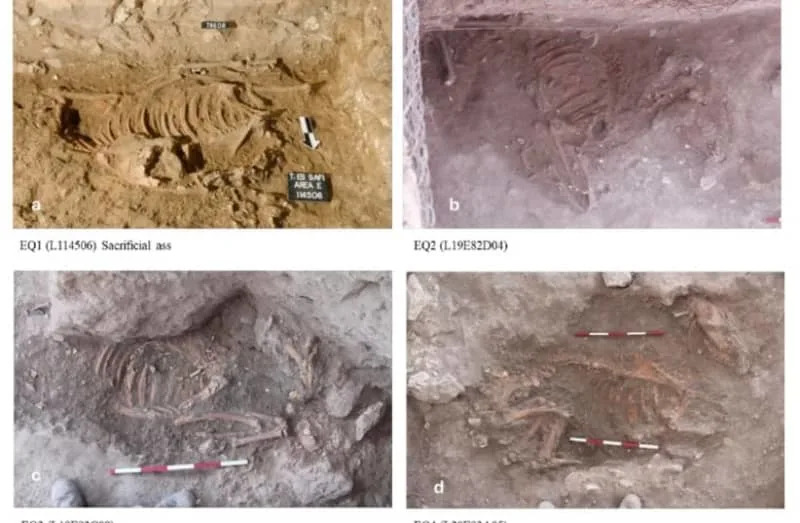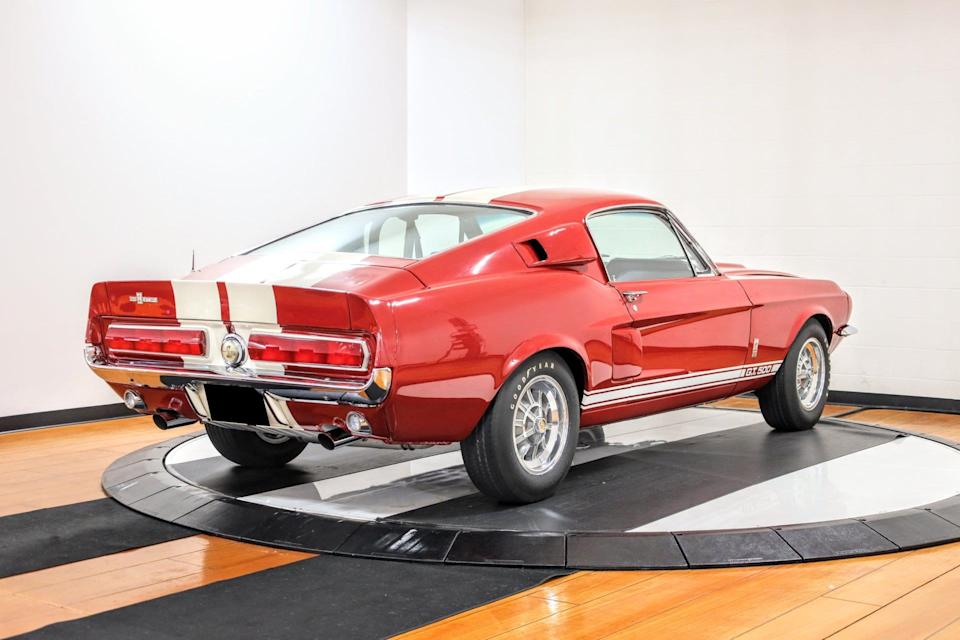Ancient donkey sacrifice ritual unearthed in Israel sheds light on Egyptian trade links
The donkeys, found buried under a Bronze Age house in ancient Gath, near Tell es-Safi, were determined to have originated from ancient Egypt.
A team of archaeologists has made a groundbreaking discovery in Israel, uncovering the remains of four donkeys that were ritually sacrificed over 4,500 years ago.
The donkeys, found buried under a Bronze Age house in ancient Gath, near Tell es-Safi, around 20 km. northwest of Hebron, were determined to have originated from ancient Egypt.
According to a new study published in the journal PLOS One, the donkeys were likely used for agricultural labor and trade, and their sacrifice may have been a display of wealth and social status. The researchers found that the donkeys were all female, in their prime age, and had been buried with their legs tied together.
The discovery of the donkeys’ remains has shed new light on the ritual practices of the ancient Canaanites, who inhabited the region during the Early Bronze Age III (circa 2900 to 2550 BCE). The researchers believe that the donkeys’ Egyptian origin may indicate that their owners were merchants and traders who had connections with Egypt.
 The remains of four donkeys found in Tell es-Safi, south Israel, July 2025. (credit: Elizabeth R. Arnold et al./Plos One)
The remains of four donkeys found in Tell es-Safi, south Israel, July 2025. (credit: Elizabeth R. Arnold et al./Plos One)Donkey remains have been consistently found at ancient Gath. After finding a decapitated donkey in 2010, with its head having been “fully cut off and carefully placed on the abdomen facing in the opposite direction” according to the study, researchers continued searching for other donkeys in the area.
Using chemical analysis and testing isotopes and the donkey’s tooth enamel, researchers determined the donkey was originally from the Nile Valley. These results were also published in PLOS One in 2016.
Sacrificing a donkey as sign of power and wealth
Researchers added that the choice to sacrifice a donkey, rather than any other animal, at the time was likely a sign of power and wealth, based on the demand for the animal in such a critical transportation role. Donkeys and similar animals were used in the ancient world primarily for hard agricultural labor. This included, but was not limited to, plowing and pulling heavy loads, as well as transportation of goods.
These donkeys were also female, which was particularly valuable, and were believed to be replaceable by the sacrificing parties, according to the recently published study. All of their skulls pointed eastward, and their front and back legs had been tied together.
Finding the four sacrificial animals depicts the mules’ vital roles in both ritual practices and the economy.
“This finding highlights the importance of donkeys in the ancient world, not only for economic and trade purposes but also for ritual practices,” Elizabeth Arnold, an anthropologist and environmental archaeologist at Grand Valley State University in Michigan, told LiveScience.
The researchers used isotopic analysis to help determine the origin of the donkeys, and the results revealed that they had lived in the Nile Valley. This discovery suggests that the donkeys were brought to ancient Gath from Egypt, likely as part of a trade or economic exchange.
The study’s findings provide a fascinating glimpse into the lives of ancient animals and their role in human society. As the researchers continue to study the remains of the donkeys, they hope to learn more about the complex relationships between humans and animals in the ancient world.














